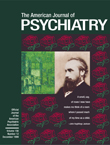Acute Efficacy of ECT in the Treatment of Major Depression in the Old-Old
Abstract
OBJECTIVE: There are few data addressing the outcome of ECT for persons over 75 years of age. In a prospective, multisite study, the authors compared characteristics and treatment outcomes of adult (59 and younger), young-old (60 to 74 years), and old-old (75 and older) patients treated with ECT for major depression. METHOD: At four hospitals, 268 patients with primary unipolar major depression and scores of at least 20 on the 24-item Hamilton Depression Rating Scale were treated with suprathreshold right unilateral or bilateral ECT in a standardized manner. Demographic variables, clinical characteristics, and short-term outcomes of the three groups were compared. RESULTS: The demographic and clinical characteristics of the old-old patients were similar to those of the young-old patients, whereas both groups differed from the adult patients on these variables. Both older groups had significantly greater burdens from physical illness and global cognitive impairment at baseline than the adult subjects. Both older groups had shorter index depressive episodes and were less likely to have had inadequate responses to adequate medication trials before ECT. The older groups had higher seizure thresholds, but the three groups received similar courses of treatment. The adult patients experienced a significantly lower rate of ECT response (54%) than the young-old patients (73%), while the old-old patients had an intermediate rate of response (67%). CONCLUSIONS: Despite a higher level of physical illness and cognitive impairment, even the oldest patients with severe major depression tolerate ECT in a manner similar to that for younger patients and demonstrate similar or better acute response.



